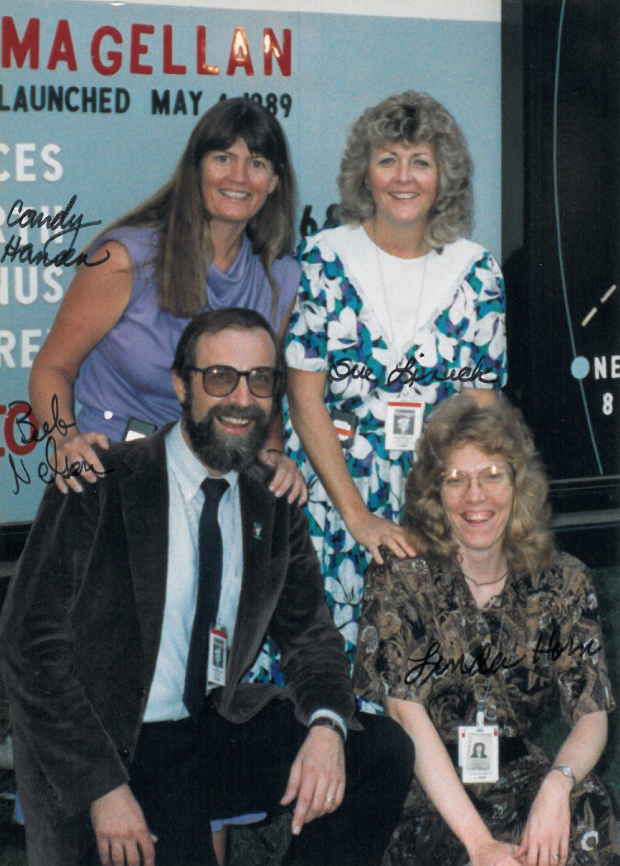
Linda Spilker
Cassini Project Scientist
Role on Voyager
Infrared Interferometer Spectrometer and Radiometer Experiment Representative and Photopolarimeter Science Associate
Current role
Cassini Project Scientist
Hometown
Minneapolis, Minnesota
What is your most meaningful Voyager moment and why?
Working on a mission like Voyager, with the opportunity to explore the planets, was something I dreamed about since first looking at Jupiter and Saturn in third grade with my tiny telescope. I wondered what these worlds looked like up close and Voyager gave me a chance to find out.
Voyager was my first job right out of college. I was the Infrared Interferometer Spectrometer and Radiometer (IRIS) experiment representative, the interface between the Voyager project and the IRIS scientists at Goddard. I was the only woman in their group and very proud to represent them. What a thrill to work with such an incredible group of talented scientists. They mentored me and later invited me to join them as part of the Cassini infrared team.
I have some wonderful memories of the discoveries Voyager made. Saturn’s rings in particular captured my imagination and I was thrilled to also be a science associate with the photopolarimeter (PPS) team studying stellar occultation data of the rings of Saturn, Uranus and Neptune – which meant we were studying the light from a star shining through the rings as Voyager passed by, winking on and off as the ring particles pass in front of the star.
One of my favorite memories involved watching the slow plotting of the occultations, the highest resolution Saturn ring data ever recorded. The data points in the rings were only 100 meters apart. A pen moved back and forth carefully recording each data point on a long roll of paper that slowly unwound beneath it. I remember later carefully unrolling this scroll of data on the floor in a long hallway, looking at the amazing ring structure, and feeling like I was literally walking through Saturn’s rings.
The PPS PI, Lonne Lane, showed me how to analyze these data. I wrote my doctoral thesis on my new findings. Being part of Voyager helped me begin my career as a ring scientist.
My Voyager experiences shaped my life in other ways too. In particular, the spacing of the flybys affected the timing of the births of my children. I tell my daughters — Jennifer and Jessica — that their births were based on the alignment of the planets, and I mean that! They were born in a five-year window between the Voyager Saturn flyby in 1981 and the Uranus flyby in 1986. Other Voyager moms, including my good friends Candy Hansen and Sue Linick, started their families during this time as well. Our children literally grew up together! We each were experiment reps for Voyager instruments on the scan platform: Imaging Science Subsystem (Candy), and Ultraviolet Spectrometer (Sue). Bob Nelson was the fourth scan platform experiment rep (Photopolarimeter). All four of us are shown in the picture above. Our heads are carefully placed in the positions of our instruments on the Voyager scan platform.
The opportunity to share experiences with the Voyager scientists was a dream come true. As I worked with the Voyager teams for over a decade, four distant planets — with their rings and tiny moons — became distinct, individual worlds with astonishing characteristics.
























